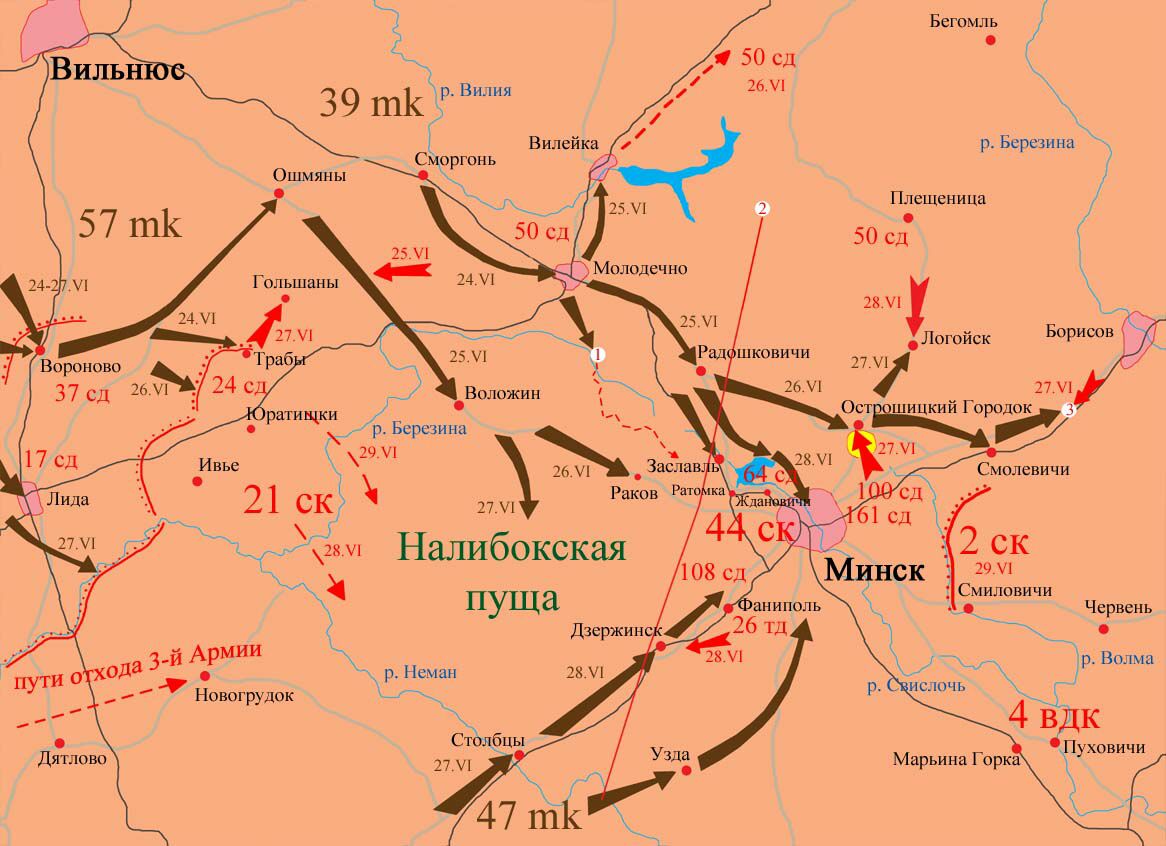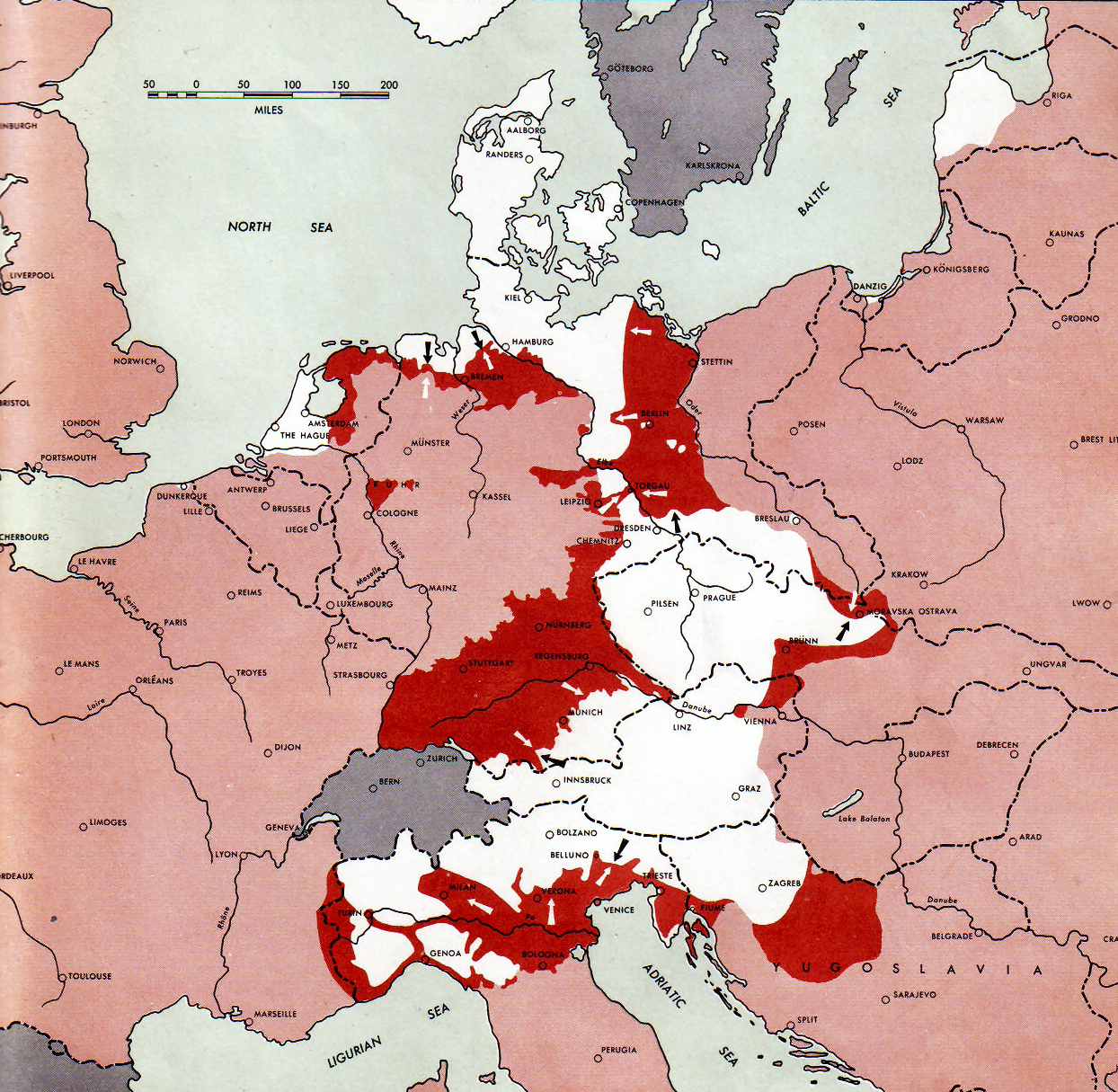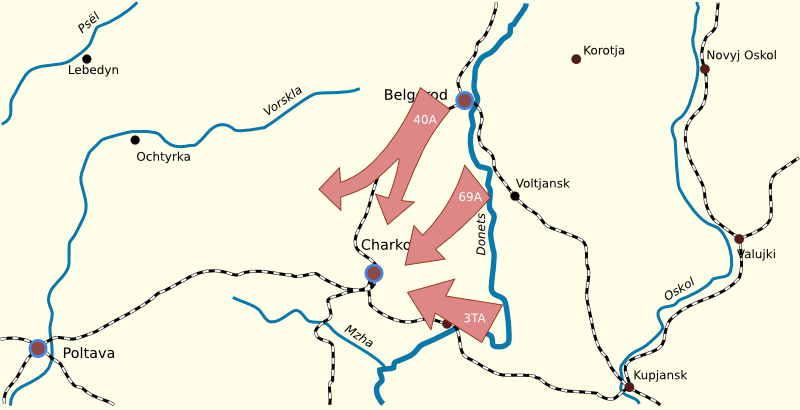|
Friedrich Fangohr
__NOTOC__ Friedrich Fangohr (12 August 1899 – 17 April 1956) was a general in the Wehrmacht of Nazi Germany during World War II who commanded the I Army Corps. He was also a recipient of the Knight's Cross of the Iron Cross. Awards and decorations * Iron Cross (1914) 2nd Class (24 December 1917) & 1st Class (25 October 1918) * Silesian Eagle 2nd Class (2 July 1919) & 1st Class (23 July 1919) * Clasp to the Iron Cross (1939) 2nd Class (25 September 1939) & 1st Class (12 October 1939) * Eastern Front Medal (22 August 1942) * Knight's Cross of the Iron Cross on 9 June 1944 as ''Generalleutnant () is the German-language variant of lieutenant general, used in some German speaking countries. Austria Generalleutnant is the second highest general officer rank in the Austrian Armed Forces (''Bundesheer''), roughly equivalent to the NATO ...'' and Chief of Generalstab of Panzer-A.O.K. 4 References Citations Bibliography * * {{DEFAULTSORT:Fangohr, Friedrich ... [...More Info...] [...Related Items...] OR: [Wikipedia] [Google] [Baidu] |
Erich Von Manstein
Fritz Erich Georg Eduard von Manstein (born Fritz Erich Georg Eduard von Lewinski; 24 November 1887 – 9 June 1973) was a Germans, German Officer (armed forces), military officer of Poles (people), Polish descent who served as a ''Generalfeldmarschall'' (Field marshal, Field Marshal) in the ''German Army (1935–1945), Heer'' (Army) of Nazi Germany during World War II. He was subsequently convicted of war crimes and sentenced to 18 years imprisonment. Born into an aristocratic Prussian family with a long history of military service, Manstein joined the army at a young age and saw service on both the Western Front (World War I), Western and Eastern Front (World War I), Eastern Front during the First World War (1914–18). He rose to the rank of captain by the end of the war and was active in the inter-war period helping Germany rebuild its armed forces. In September 1939, during the invasion of Poland at the beginning of the Second World War, he served as Chief of Staff to Gerd ... [...More Info...] [...Related Items...] OR: [Wikipedia] [Google] [Baidu] |
Battle Of Białystok–Minsk
The Battle of Białystok–Minsk was a German strategic operation conducted by the Wehrmacht's Army Group Centre under Field Marshal Fedor von Bock during the penetration of the Soviet border region in the opening stage of Operation Barbarossa, lasting from 22 June to 9 July 1941. The Army Group's 2nd Panzer Group under Colonel General Heinz Guderian and the 3rd Panzer Group under Colonel General Hermann Hoth decimated the Soviet frontier defenses, defeated all Soviet counter-attacks and encircled four Soviet Armies of the Red Army's Western Front near Białystok and Minsk by 30 June. The majority of the Western Front was enclosed within, and the pockets were destroyed by 9 July. The Red Army lost from 420,000 to 474,000 men, against Wehrmacht casualties estimated between 12,157 and 67,244. The Germans destroyed the Soviet Western Front in 18 days and advanced 460 kilometers into the Soviet Union, causing many to believe that the Germans had effectively won the war aga ... [...More Info...] [...Related Items...] OR: [Wikipedia] [Google] [Baidu] |
Clasp To The Iron Cross
Clasp, clasper or CLASP may refer to: * Book clasp, fastener for a book cover * Folding clasp, a device used to close a watch strap * Lobster clasp, fastener for jewellery * Wrist clasp, a dressing accessory * Medal bar, an element in military decoration * Fastener, a hardware device that mechanically joins objects together * CLASP (British Rail), a prefabricated building system * "Clasp", a song by Jethro Tull from '' The Broadsword and the Beast'' * Clasp, a Common Lisp implementation * Clasper, an anatomical structure in male cartilaginous fish * Clasper (mathematics), a surface (with extra structure) in a 3-manifold on which surgery can be performed * Grasp, holding or seizing firmly with (or as if with) the hand Acronyms and initialisms * Center for Law and Social Policy, an American organization, based Washington, D.C., that advocates for policies aimed at improving the lives of low-income people * CLASP1 and CLASP2, cytoplasmic linker associated proteins * Cla ... [...More Info...] [...Related Items...] OR: [Wikipedia] [Google] [Baidu] |
Silesian Eagle
The Silesian Eagle (German language: ''Schlesischer Adler''; ) was a medal awarded to members of the German right-wing paramilitary group '' Freikorps Oberland'' for three or six months of service, as well as for fighting during the Silesian Uprisings during the Weimar Republic. Instituted on the 19 of June 1919 by VI. Armee-Korps Generalleutnant Friedrich von Friedeburg, the award was given in two classes, 2nd class for three months of service and 1st class for 6 months of service. Following the ''Freikorps'' participation at the Battle of Annaberg, it was also awarded with oak leaves, swords, or both. This medal was one of the few Freikorps awards that were allowed to be worn on uniforms after the ''Wehrmacht'' banned unofficial medals in 1935. However, the swords and oak leaves were banned, but despite interdictions, many veterans continued wearing them in active military service in Nazi Germany Nazi Germany, officially known as the German Reich and later the G ... [...More Info...] [...Related Items...] OR: [Wikipedia] [Google] [Baidu] |
Iron Cross
The Iron Cross (, , abbreviated EK) was a military decoration in the Kingdom of Prussia, the German Empire (1871–1918), and Nazi Germany (1933–1945). The design, a black cross pattée with a white or silver outline, was derived from the insignia of the medieval Teutonic Order and borne by its knights from the 13th century. As well as being a military medal, it has also been used as an emblem by the Prussian Army, the Imperial German Army, and the of the Weimar Republic, while the ''Balkenkreuz'' (bar cross) variant was used by the ''Wehrmacht''. The Iron Cross is now the emblem of the , the modern German armed forces. King Frederick William III of Prussia established the Iron Cross award on 17 March 1813 during the Napoleonic Wars (EK 1813). The award was backdated to the birthday (10 March) of his late wife, Louise of Mecklenburg-Strelitz, Queen Louise, who was the first person to receive it (posthumously). The Iron Cross was also awarded during the Franco-Prussian War ( ... [...More Info...] [...Related Items...] OR: [Wikipedia] [Google] [Baidu] |
Wehrmacht
The ''Wehrmacht'' (, ) were the unified armed forces of Nazi Germany from 1935 to 1945. It consisted of the German Army (1935–1945), ''Heer'' (army), the ''Kriegsmarine'' (navy) and the ''Luftwaffe'' (air force). The designation "''Wehrmacht''" replaced the previously used term (''Reich Defence'') and was the manifestation of the Nazi regime's efforts to German rearmament, rearm Germany to a greater extent than the Treaty of Versailles permitted. After the Adolf Hitler's rise to power, Nazi rise to power in 1933, one of Adolf Hitler's most overt and bellicose moves was to establish the ''Wehrmacht'', a modern offensively-capable armed force, fulfilling the Nazi regime's long-term goals of regaining lost territory as well as gaining new territory and dominating its neighbours. This required the reinstatement of conscription and massive investment and Military budget, defence spending on the arms industry. The ''Wehrmacht'' formed the heart of Germany's politico-military po ... [...More Info...] [...Related Items...] OR: [Wikipedia] [Google] [Baidu] |
Knight's Cross Of The Iron Cross
The Knight's Cross of the Iron Cross (), or simply the Knight's Cross (), and its variants, were the highest awards in the military and paramilitary forces of Nazi Germany during World War II. While it was order of precedence, lower in precedence than the Grand Cross of the Iron Cross#1939 Grand Cross, Grand Cross of the Iron Cross, the Grand Cross was never awarded at-large to Nazi German military and paramilitary forces. The Grand Cross's sole award was made to ''Reichsmarschall'' Hermann Göring in September 1939, making the Knight's Cross (specifically, the Knight's Cross of the Iron Cross#Grades, Knight's Cross with Golden Oak Leaves, Swords, and Diamonds grade) the ''de facto'' highest award among the Orders, decorations, and medals of Nazi Germany, decorations of Nazi Germany. The Knight's Cross was awarded for a wide range of reasons and across all ranks, from a senior commander for skilled leadership of his troops in battle to a low-ranking soldier for a single act of ... [...More Info...] [...Related Items...] OR: [Wikipedia] [Google] [Baidu] |
Courland Pocket
The Courland Pocket was a Pocket (military), pocket located on the Courland Peninsula in Latvia on the Eastern Front (World War II), Eastern Front of World War II from 9 October 1944 to 10 May 1945. Army Group North of the ''Wehrmacht'' were surrounded in western Latvia by the Red Army after the Baltic Offensive, when forces of the 1st Baltic Front reached the Baltic Sea near Klaipėda, Memel (Klaipėda) after the collapse of Army Group Centre during Operation Bagration. Army Group North retreated to the Courland Pocket and was renamed Army Group Courland on 25 January, holding off six Red Army Offensive (military), offensives until the German Instrument of Surrender was signed on 8 May 1945. Army Group Courland were in a communication "Blackout (broadcasting), blackout" and did not get the official order until 10 May, becoming one of the last German groups to European theatre of World War II, surrender in Europe. Background In June 1941, Nazi Germany launched Operation Bar ... [...More Info...] [...Related Items...] OR: [Wikipedia] [Google] [Baidu] |
Lower Dnieper Offensive
The Battle of the Dnieper was a military campaign that took place in 1943 on the Eastern Front of World War II. Being one of the largest operations of the war, it involved almost four million troops at one point and stretched over a front. Over four months, the eastern bank of the Dnieper was recovered from German forces by five of the Red Army's fronts, which conducted several assault river crossings to establish several lodgements on the western bank. Kiev was later liberated in the Second Battle of Kiev. 2,438 Red Army soldiers were awarded the title Hero of the Soviet Union for their involvement. Strategic situation Following the Battle of Kursk, the Wehrmachts ''Heer'' and supporting ''Luftwaffe'' forces in the southern Soviet Union were on the defensive in southern Ukraine. By mid-August, Adolf Hitler understood that the forthcoming Soviet offensive could not be contained on the open steppe and ordered construction of a series of fortifications along the line of the ... [...More Info...] [...Related Items...] OR: [Wikipedia] [Google] [Baidu] |
Battle Of Kursk
The Battle of Kursk, also called the Battle of the Kursk Salient, was a major World War II Eastern Front battle between the forces of Nazi Germany and the Soviet Union near Kursk in southwestern Russia during the summer of 1943, resulting in a Soviet victory. The Battle of Kursk is the single largest battle in the history of warfare. It ranks only behind the Battle of Stalingrad several months earlier as the most often-cited turning point in the European theatre of the war. It was one of the costliest battles of the Second World War, the single deadliest armoured battle in history, and the opening day of the battle, 5 July, was the single costliest day in the history of aerial warfare in terms of aircraft shot down. The battle was further marked by fierce house-to-house fighting and hand-to-hand combat. The battle began with the launch of the German offensive Operation Citadel (), on 5 July, which had the objective of pinching off the Kursk salient with attacks on the ... [...More Info...] [...Related Items...] OR: [Wikipedia] [Google] [Baidu] |
Third Battle Of Kharkov
The Third Battle of Kharkov was a series of battles on the Eastern Front (World War II), Eastern Front of World War II, undertaken by Nazi Germany's Army Group South against the Soviet Red Army, around the city of Kharkov between 19 February and 15 March 1943. Known to the German side as the Donets Campaign, and in the Soviet Union as the Donbass and Kharkov operations, the German counterstrike led to the recapture of the cities of Kharkov and Belgorod. As the German 6th Army (Wehrmacht), 6th Army was encircled in the Battle of Stalingrad, the Red Army undertook a series of wider attacks against the rest of Army Group South. These culminated on 2 January 1943 when the Red Army launched Operation Star and Operation Gallop, which between January and early February broke German defenses and led to the Soviet recapture of Kharkov, Belgorod, Kursk, as well as Voroshilovgrad and Izium. These victories caused participating Soviet units to over-extend themselves. Freed on 2 February ... [...More Info...] [...Related Items...] OR: [Wikipedia] [Google] [Baidu] |
Operation Winter Storm
Operation Winter Storm (), a German offensive in December 1942 during World War II, involved the German 4th Panzer Army failing to break the Soviet encirclement of the German 6th Army during the Battle of Stalingrad. In late November 1942 the Red Army had completed Operation Uranus, encircling some 300,000 Axis personnel in and around the city of Stalingrad. German forces within the Stalingrad pocket and directly outside were reorganized (22 November 1942) into Army Group Don and placed under the command of Field Marshal Erich von Manstein. The Red Army continued to allocate as many resources as possible to the planned Operation Saturn to isolate Army Group A from the rest of the German Army. To remedy the situation, the ''Luftwaffe'' attempted to supply German forces in Stalingrad through an air bridge. When the ''Luftwaffe'' failed and it became obvious that a breakout could succeed only if launched as early as possible, Manstein decided on a relief effort. Originally, Mans ... [...More Info...] [...Related Items...] OR: [Wikipedia] [Google] [Baidu] |




